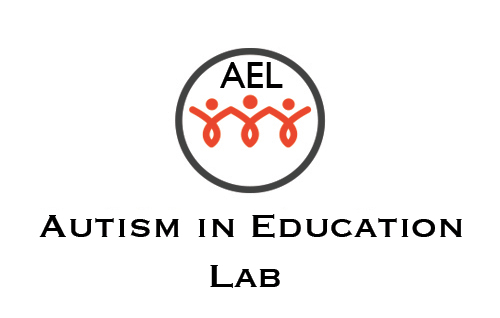Bahmei, B., Birmingham, E., & Arzanpour, S. (2022). CNN-RNN and data augmentation using deep convolutional generative adversarial network for environmental sound classification. IEEE Signal Processing Letters, 29, 682-686.
Pereira, E. J., Birmingham, E., & Ristic, J. (2022). Social attention as a general mechanism? Demonstrating the influence of stimulus content factors on social attentional biasing. Journal of Experimental Psychology: Human Perception and Performance, 48(4), 289
Pereira, E. J., Birmingham, E., & Ristic, J. (2022). Infrequent faces bias social attention differently in manual and oculomotor measures. Attention, Perception, & Psychophysics, 84(3), 829-842.
Birmingham E, Arzanpour S, Bahmei B. (2021). System and method for ambient noise detection, identification and management. (World Patent No. WO2021119806). World Intellectual Property Organization. https://patentscope.wipo.int/search/en/detail.jsf?docId=WO2021119806
Scheerer, N. E., Boucher, T. Q., Bahmei, B., Iarocci, G., Arzanpour, S., & Birmingham, E. (2021). Family experiences of decreased sound tolerance in ASD. Journal of Autism and Developmental Disorders, 1-15.
Scheerer, N. E., Birmingham, E., Boucher, T. Q., & Iarocci, G. (2021). Attention capture by trains and faces in children with and without autism spectrum disorder. Plos one, 16(6), e0250763.
Trevisan, D. A., Leach, S., Iarocci, G., & Birmingham, E. (2021). Evaluation of a peer mentorship program for autistic college students. Autism in Adulthood, 3(2), 187-194.
Trevisan, D. A., Enns, J. T., Birmingham, E., & Iarocci, G. (2021). Action coordination during a real-world task: Evidence from children with and without autism spectrum disorder. Development and Psychopathology, 33(1), 65-75.
Pereira, E., Birmingham, E., & Ristic, J. (2019). Contextually-based social attention diverges across covert and overt measures. Vision, 3(2), 29. doi: 10.3390/vision3020029.
Pereira, E., Birmingham, E., & Ristic, J. (2019). The eyes don’t have it after all? Attention is not automatically biased towards faces and eyes. Psychological Research, Published first online Jan 2, 2019, doi: 10.1007/s00426-018-1130-4.
Trevisan, D. A., Hoskyn, M. & Birmingham, E. (2018). Facial expression production in Autism: a meta‐analysis. Autism Research, 11, 1586-1601. doi:10.1002/aur.2037.
Birmingham, E., Svärd, J., Kanan, C., & Fischer, H. (2018). Exploring emotional expression recognition in aging adults using the Moving Window Technique. PLOS One, 13(10), e0205341, doi: 10.1371/journal.pone.0205341.
Trevisan, D.A., Roberts, N., Lin, C., & Birmingham, E. (2017). How do adults and teens with self-declared Autism Spectrum Disorder experience eye contact? A qualitative analysis of first-hand accounts. PLOS One, 12(11), e0188446. doi: 10.1371/journal.pone.0188446.
Birmingham, E., Johnston, K.H.S., & Iarocci, G. (2017). Spontaneous gaze following during naturalistic social interactions in school-aged children and adolescents with Autism Spectrum Disorder. Canadian Journal of Experimental Psychology, 71(3), 243-257, doi: 10.1037/cep0000131.
Roberts, N., & Birmingham, E. (2017). Mentoring university students with ASD: a mentee-centered approach. Journal of Autism and Developmental Disorders, 47(4), 1038-1050, doi: 10.1007/s10803-016-2997-9.
Trevisan, D.A., Bowering, M., & Birmingham, E. (2016). Alexithymia, but not autism spectrum disorder, may be related to the production of emotional facial expressions. Molecular Autism, 7:46, 1-12, doi: 10.1186/s13229-016-0108-6.
Trevisan, D.A., & Birmingham, E. (2016). Are emotion recognition abilities related to everyday social functioning in ASD? A meta-analysis. Research in Autism Spectrum Disorders, 32, 24-42, doi: 10.1016/j.rasd.2016.08.004
Trevisan, D.A., & Birmingham, E. (2015). Examining the relationship between autistic traits and college adjustment. Autism, 20(6), 719-729. doi: 10.1177/1362361315604530
Birmingham, E.*, Stanley, D.*, Nair, R., & Adolphs, R. (2015). Implicit social biases in people with Autism. Psychological Science, 26(11): 1693-1705, doi: 10.1177/0956797615595607. *D. Stanley and I contributed equally to the paper.
Dalrymple, K., Gray, A., Perler, B., Birmingham, E., Bischof, W.F., Barton, J., & Kingstone, A. (2013). Eying the eyes in social scenes: Evidence for top-down control of stimulus selection in simultanagnosia. Cognitive Neuropsychology, 30(1), 25-40, doi: 10.1080/02643294.2013.778234.
Birmingham, E., Meixner, T., Iarocci, G., Kanan, C., Smilek, D., & Tanaka, J. (2013). The Moving Window Technique: a window into developmental changes in attention during facial emotion recognition. Child Development, 84(4): 1407-24, doi: 10.1111/cdev.12039.
Birmingham, E., Cerf, M., & Adolphs, R. (2011). Comparing social attention in autism and amygdala lesions: effects of stimulus and task condition. Social Neuroscience, 6(5-6), 420-435, doi: 10.1080/17470919.2011.561547.
Dalrymple, K.A., Birmingham, E., Bischof, W., Barton, J.J.S., & Kingstone, A. (2011). Opening a window on attention: Documenting and simulating recovery from simultanagnosia, Cortex, 47(7), 787-99, doi: 10.1016/j.cortex.2010.07.00.
Dalrymple, K.A., Birmingham, E., Bischof, W., Barton, J.J.S., & Kingstone, A. (2011). Experiencing simultanagnosia through windowed viewing of complex social scenes. Brain Research, 1367(7), 265-277, doi: 10.1016/j.brainres.2010.10.022.
